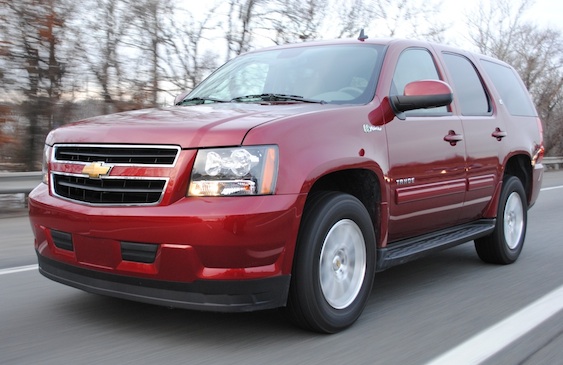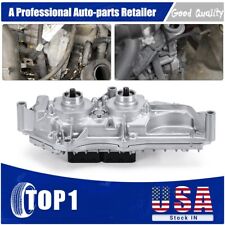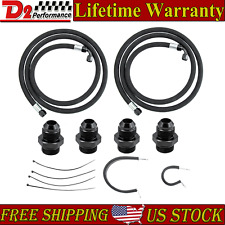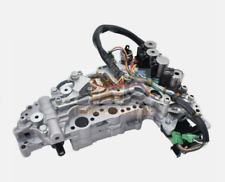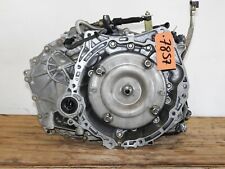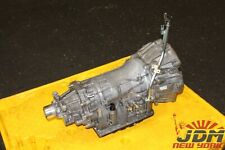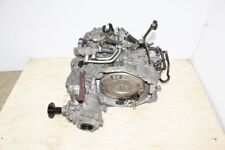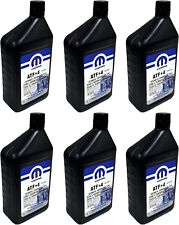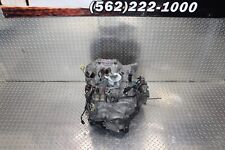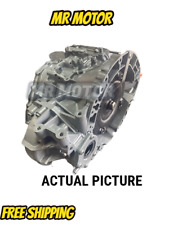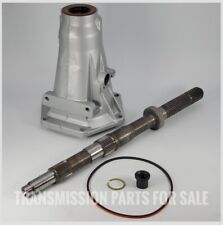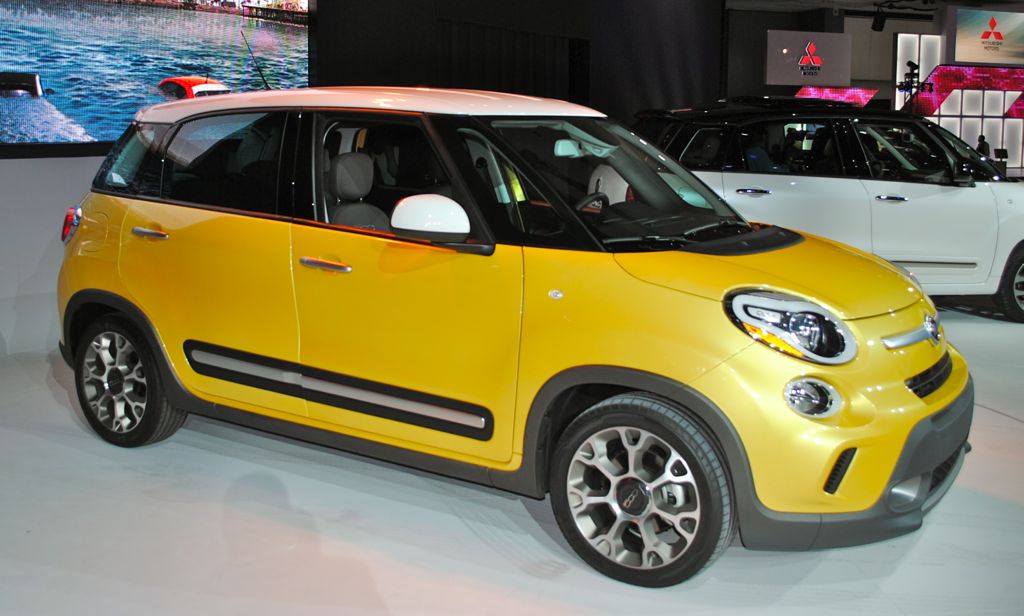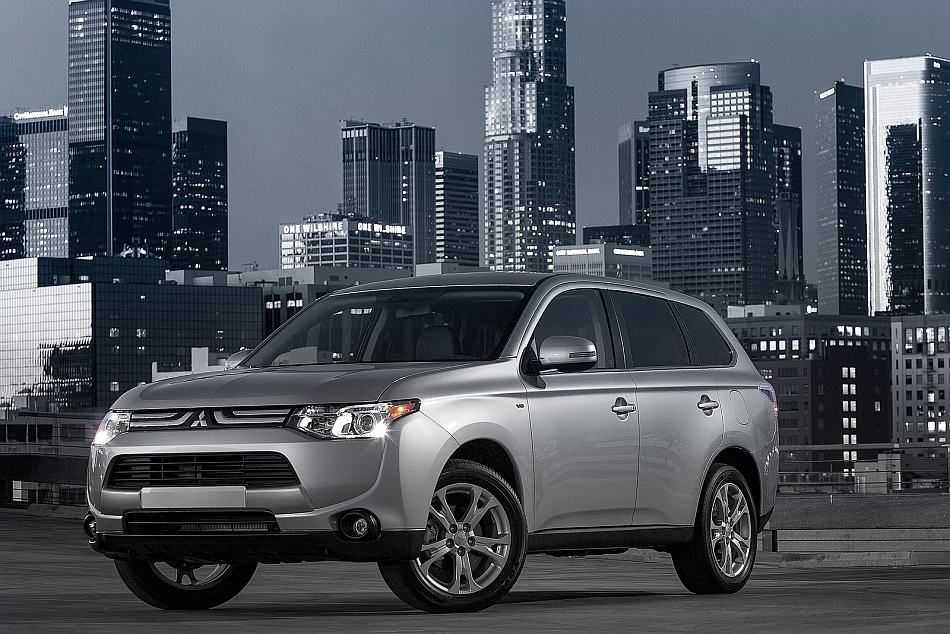Review: 2010 Chevrolet Tahoe Hybrid has some strong capabilities, but is it worth the premium?

Just as we jumped out of the 2010 Cadillac Escalade ESV Platinum, we were ready to get right behind the wheel of another GM full-size SUV, the 2010 Chevrolet Tahoe. However, instead of burning gas and averaging something like 2 mpg, we were given the chance to be a bit greener, albeit a very light shade of green with the 2010 Tahoe Hybrid. This car is primarily for those who need plenty of passenger space and tow heavy loads, while at the same time achieving better fuel-economy than they otherwise would with other full-size SUV”s currently on the market.
Despite the greener mechanics, the Tahoe Hybrid remains mostly unchanged from its gasoline-only counterpart in key areas of functionality. The seating capacity is exactly the same, and the towing and payload capacities are highly competitive even when compared to non-hybrid SUV”s in the segment. There are some subtle key enhancements however, specifically in those areas that contribute to fuel-economy. Read on to find out just what they are.
Hit the jump to read more and to view our high-res image gallery (at the bottom of the post).
Review: 2010 Chevrolet Tahoe Hybrid:
2010 Chevrolet Tahoe Hybrid Specifications:
Base Price: $50,720 (AWD Tahoe Hybrid starts at $53,525)
Price as Tested: $54,977.
Engine: 6.0L V8 ““ 332-hp /367 lb-ft of torque mated to GM’s Two-Mode Hybrid.
Curb Weight: 6,200 lbs (6,000 lbs for AWD).
0 to 60 mph: 7.5 seconds.
Fuel-Economy (city/highway): 21/22 mpg (20/20 mpg for AWD).
All Photos Copyright © 2010 Omar Rana ““ egmCarTech.

Exterior:
Generally speaking, the body of the Tahoe Hybrid conserves the design of the standard Tahoe, save for a few changes that while they appear to be for the sake of aesthetics, are actually quite functional as they serve to improve fuel-economy.
The fog lamps and tow hooks have been removed from the front fascia, and the lower air-dam helps redirect air flow beneath the truck to reduce turbulence and drag. The wheel openings have also been re-sized, allowing for an impressively low drag coefficient of .34. The front grille opening has also been increased in size so as to allow increased airflow to the radiator and engine compartment. The back of the vehicle sees the addition of an extended rear-spoiler and aerodynamically designed LED brake lamps (the LED technology uses less energy). Tapered running boards and lack of side-rails on the roof-rack also contribute to this improvement in turbulence and drag.
Another key fuel-economy feature is the use of aluminum for the hood and lift-gate; they reduce weight considerably, but that also means you won”t get the power lift-gate since all the electronics add weight. The use of lighter-weight aluminum is also carried down through the wheels, which are low-mass, aero-efficient 18-inch cast aluminum.

Interior:
Design cues inside the cabin also suggest the hybrid nature of this vehicle. There is a special hybrid gauge cluster that includes a special tachometer incorporating an Auto Stop position just above the 0 rpm mark which indicates when the gasoline engine is in shut-down mode. Also included in this cluster is an analog economy gauge that helps the driver operate the vehicle in a manner that is more efficient. To help the driver further gauge his driving, the main center console also features a standard 6.5-inch full-color VGA navigation display that doubles as a monitor which shows a graphic representation of the hybrid drivetrain”s power flow.
There is a long list of features that come standard in the Tahoe Hybrid; automatic dual-zone climate control, rear climate control, heated leather front seats, pass-through 60/40 split rear seats, entertainment system with DVD player and 7-inch center mount screen for rear passengers, Bluetooth connectivity, adjustable pedals, and a rearview camera which is fed into the navigation screen.
All in all we were pleased with the interior, except for GM”s use of hard plastic around the front console and the lack of space around the third-row of seats. We sincerely hope that GM opts for soft-touch materials in lieu of the hard plastic in future revamp of this full-size SUVs, which is due sometime in 2013.

Performance:
The “˜10 Tahoe Hybrid derives its power from two sources; a Vortec 6.0L V8, and GM”s Two-Mode Hybrid System which consists of two 60 kw electric motors that derive their power from a 300-volt nickel-metal hydride battery. The 6.0L produces 332 horsepower and 367 lb-ft of torque, and only requires regular gasoline. The engine also features Active Fuel Management, which allows four of the 8 cylinders to shut down when not needed. With the assistance of electric boost, the engine is able to operate on 4 cylinders for extended periods.
The engine also features something called Auto Stop Mode, which essentially shuts the engine down when the car falls to 0 mph. This has a tremendous effect on fuel-economy in stop-and-go driving scenarios. Considering all of the economy features of the engine and the fact that the Tahoe Hybrid also features regenerative braking, which recharges the battery by reclaiming energy created from the depressed brake, one would expect the “˜10 Chevy Tahoe Hybrid to post some outstanding fuel-economy figures.
That is however, not the case. The EPA estimates the AWD model at 20/20 mpg (city/highway), while the 2WD is estimated at 21/22 mpg. During our test, we drove as we would in a regular SUV, and we were not at all impressed with the average fuel-economy of 16 mpg that we managed.
On a more positive note, the Tahoe Hybrid is capable of towing up to 6,200 lbs in 2WD configuration and up to 6,000 lbs in AWD configuration; figures that should serve as more than sufficient for 90% of the buyer’s requiring towing capabilities.

Overall:
We have serious doubts as to whether paying the premium price for the Hybrid version is justified by the minor gains in fuel-economy one would see over the gas model ““ and that goes for any hybrid.
The “˜10 Tahoe comes with a starting MSRP of $37,280, while the Hybrid variant carries a starting tag of $50,720; a premium of $13,440. Weigh that differential in price with the EPA estimated 15/21 mpg. If a 5 or 6 mpg increase in fuel-economy fits your life style to the extent that it is worth over $13,000, then by all means go ahead and make the purchase, just be prepared to keep the car for a very long time to recoup that extra price premium.
Review: 2010 Chevrolet Tahoe Hybrid:
– By: Stephen Calogera
All Photos Copyright © 2010 Omar Rana ““ egmCarTech.

